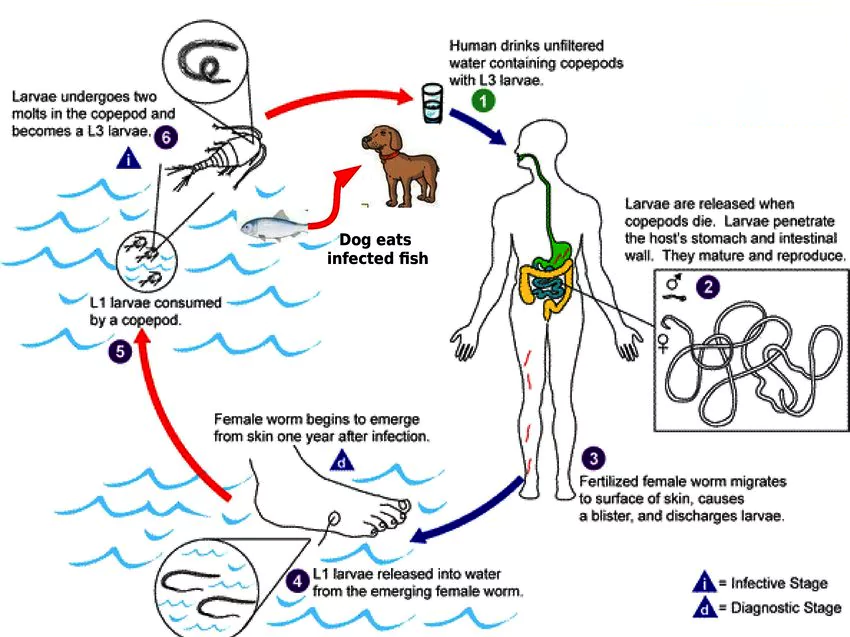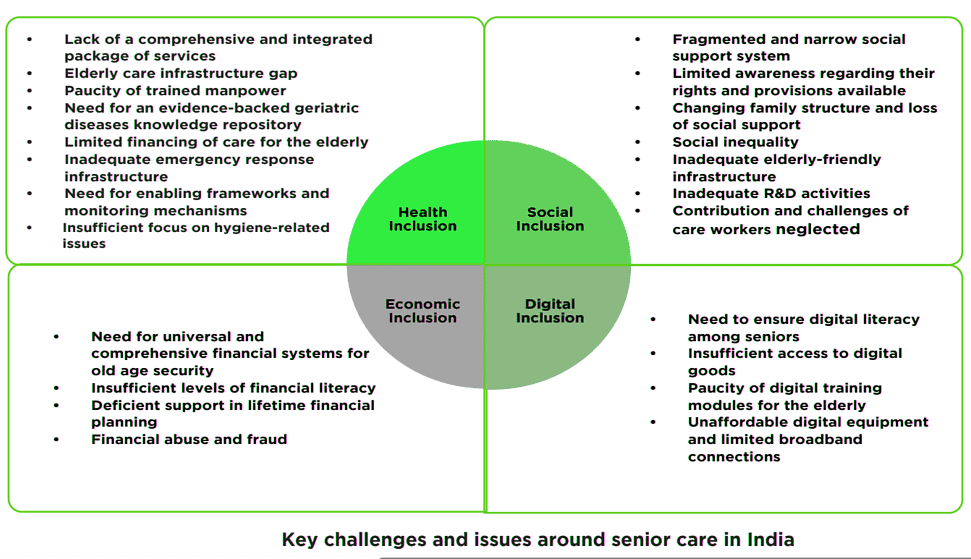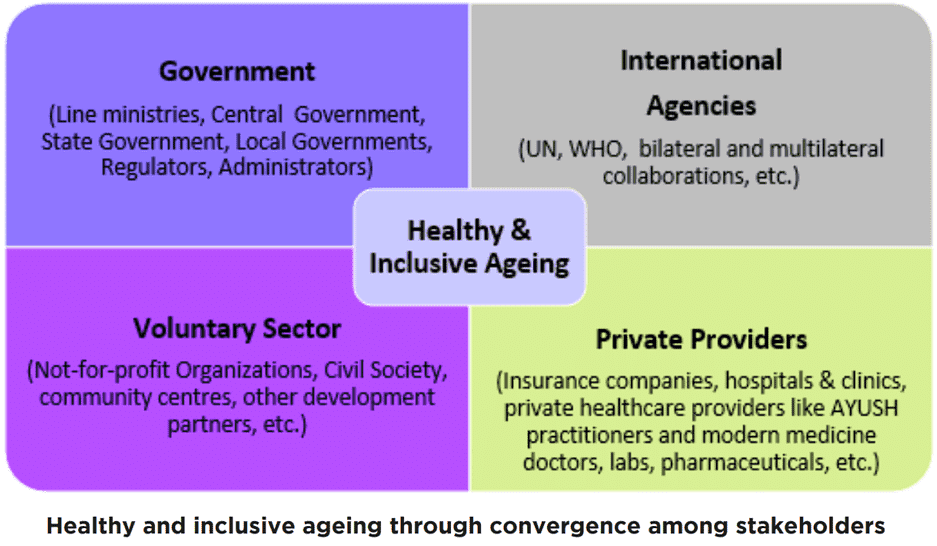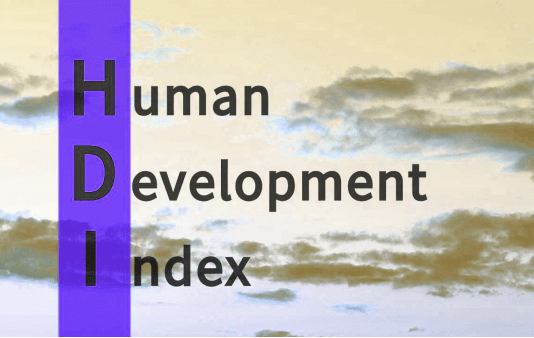Indian Society & Social Justice - 3 | Current Affairs & Hindu Analysis: Daily, Weekly & Monthly - UPSC PDF Download
Kala Azar
Why in News?
India has made notable advancements in the fight against Kala Azar (KA), with reports showing fewer than one case per 10,000 population in 2023, a significant improvement from previous years. According to data from the National Vector Borne Disease Control Programme, there were 595 cases and four fatalities in 2023, compared to 891 cases and three deaths in 2022.
What are the Key Facts About Kala Azar?
- About: Kala-azar, also referred to as visceral leishmaniasis or Black Fever, is a severe disease caused by the protozoan parasite Leishmania donovani.
- Symptoms: The disease is marked by irregular fever, weight loss, an enlarged spleen and liver, as well as anemia.
- Prevalence: This disease is primarily found in Brazil, East Africa, and India, with an estimated 50,000 to 90,000 new cases occurring globally each year. However, only 25-45% of these cases are reported to the WHO, indicating a risk of outbreaks and high mortality rates.
- Transmission: The Leishmania parasites are transmitted through bites from infected female sandflies, which require blood meals for reproduction. Over 70 species of animals, including humans, can act as reservoirs for these parasites.
Major Risk Factors:
- Poverty and inadequate housing and sanitation.
- Poor nutrition and diets lacking essential nutrients.
- Movement into areas with high transmission rates.
- Urbanization, deforestation, and climate change.
- Diagnosis and Treatment: Immediate medical attention is necessary for suspected cases of visceral leishmaniasis. Diagnosis typically involves clinical evaluation alongside parasitological or serological tests. If untreated, the disease can be fatal in 95% of cases.
Prevention and Control:
- Early diagnosis and prompt treatment are vital for reducing disease prevalence and preventing disabilities and deaths.
- Vector control methods, such as insecticide spraying and the use of insecticide-treated nets, are effective in reducing sandfly populations and transmission.
- Robust disease surveillance is crucial for monitoring outbreaks and managing high case fatality rates.
- Community mobilization and partnerships, including education and collaboration with various stakeholders, are essential for effective disease control efforts.
India’s Efforts to Control Kala Azar
- The Government of India initiated a centrally sponsored Kala-azar control program in 1990-91, which was revised in 2015 with the goal of eliminating Kala-azar by 2023, aligning with the WHO’s roadmap for neglected tropical diseases (NTDs) by 2030.
- The National Vector Borne Disease Control Programme (NVBDCP), established in 2003, serves as a comprehensive initiative for the prevention and control of vector-borne diseases, including Kala Azar, malaria, lymphatic filariasis, and chikungunya.
Recent Efforts:
- A rigorous indoor residual spraying campaign has been implemented to reduce breeding sites for sandflies.
- Specialized soil has been applied to seal crevices in mud walls to prevent sandfly nesting.
- Pucca houses have been constructed in Kala Azar-affected villages under the PMAY-G scheme, with a total of 25,955 houses built in 2017-18 (including 1,371 houses in Bihar and 24,584 in Jharkhand).
- The ASHA (Accredited Social Health Activist) network has been mobilized to ensure the completion of treatment for PKDL patients, who require a 12-week course of Miltefosine, an antileishmanial medication.
About Guinea Worm Disease
Why in News ?
Recently, WHO’s weekly epidemiological report highlighted just six cases were identified of Guinea worm disease in 2023.
About:
- Definition: Guinea worm disease is an infectious disease classified as a 'Neglected Tropical Disease' (NTD).
- Causing Agent: The disease is caused by the parasite known as Dracunculus medinensis, commonly referred to as the fiery serpent.
- Transmission: The disease spreads primarily through the consumption of drinking water contaminated with Guinea worm larvae.
- Affected Regions: It predominantly affects impoverished communities in remote areas of Africa lacking access to safe drinking water. While primarily a human ailment, it can also be transmitted to humans and animals through the consumption of certain aquatic animals, such as fish or frogs, that carry the larvae.
Symptoms of Guinea Worm Disease:
- The disease typically presents no initial symptoms.
- Approximately one year post-infection, individuals experience a painful burning sensation as a blister forms, usually on the legs.
- The blister eventually ruptures, allowing the worm to emerge from the skin over several weeks.
Treatment:
- Currently, there is no specific medication to treat Guinea worm disease nor a vaccine to prevent it.
- Anti-inflammatory medications can provide relief from pain and swelling.
- Antibiotic ointments may be used to prevent secondary infections.
Prevention:
- Effective preventive measures include filtering drinking water using fine-mesh cloths, chlorination, or boiling the water to eliminate larvae.
Current Status of GWD
- In the 1980s, there were more than 3.5 million reported cases of Guinea worm disease.
- According to the WHO, the number of cases drastically decreased to 14 in 2021, 13 in 2022, and just six in 2023.
- Countries like South Sudan and Mali have made significant strides in combating the disease, though challenges remain in Chad and the Central African Republic.
- India successfully eliminated Guinea worm disease in the 1990s and received certification from WHO for being Guinea worm disease-free in 2000.
What Needs to Be Done to End Guinea Worm Disease Globally?
- Intensify eradication efforts: The National Guinea Worm Eradication Programme (GWEP) was initiated in 1983-84 and requires renewed focus.
- Collaboration: There must be enhanced cooperation among government agencies, local health workers, and international partners.
- Empower Communities: Local communities should be equipped with knowledge and tools, including methods for filtering water before consumption and reporting cases to health authorities for prompt action.
- Enhanced Surveillance: Increased monitoring is necessary to detect and control infected animals.
- Health Education: Providing health education for community members and animal owners is crucial.
- Vector Control: Implementation of rigorous vector control measures is essential to prevent the spread of the disease.

Senior Care Reforms in India: NITI Aayog
Why in News?
Recently, NITI Aayog has published a position paper titled “Senior Care Reforms in India: Reimagining the Senior Care Paradigm,” which emphasizes the urgent need for enhanced focus on senior care in India.
What are the Key Highlights of the Report?
Population Ageing:
- India is experiencing significant growth in the elderly population, with a declining fertility rate (below 2.0) and increasing life expectancy (over 70 years).
- The elderly currently represent slightly more than 10% of the population, equating to about 104 million individuals.
- According to the UNFPA, this demographic is expected to rise to 19.5% of the total population by 2050.
Major Key Findings:
- As per the 2011 Census, individuals aged 60 and above constituted 8.6% of India's total population, approximately 103 million.
- The transition to lower mortality rates has resulted in a higher burden of disease among older adults.
- People aged 75 and above are predicted to increase by 340% between 2011 and 2050.
- 71% of elderly individuals live in rural regions.
- About 32% of seniors report low life satisfaction.
- The absence of a comprehensive policy for senior care is a significant challenge, leading to infrastructure gaps and inadequate healthcare access, especially in rural areas.
- In 2017, rural areas had only 43 physicians per 100,000 population, compared to 118 in urban areas.
- The ageing population poses various health, social, and economic challenges, affecting labor markets and family dynamics.
- According to the 2021 LASI report, a considerable portion of the elderly suffers from chronic diseases, functional limitations, and mental health issues.
- 75% of seniors have at least one chronic condition, with every fourth senior over 60 reporting poor health.
- Medical expenses for the elderly are typically more than double compared to younger populations.
- About 20% of seniors in India experience mental health issues.

What are the Key Recommendations of the Report?
Health:
- Promote health literacy among seniors and their caregivers.
- Strengthen geriatric healthcare within the existing healthcare framework.
- Enhance primary healthcare services through initiatives like Ayushman Bharat.
- Develop healthcare infrastructure focused on the needs of the elderly.
- Expand tele-consultation services and enhance the skilled workforce for elder care.
Social:
- Create awareness to sensitize the community about the challenges faced by the elderly.
- Establish peer support groups to foster social inclusion.
- Enhance awareness of legal safeguards and welfare schemes for the elderly.
- Implement legal reforms to strengthen existing welfare acts.
Economic and Financial:
- Reskill the elderly population and increase public fund coverage.
- Encourage mandatory savings plans for the elderly.
- Implement reverse mortgage mechanisms to improve liquidity for seniors.
- Reduce GST on senior care products to ease financial burdens.
- Promote geriatric health insurance products in the private sector.
Digital:
- Increase access to affordable digital devices for seniors.
- Enhance digital literacy to enable better use of technology.
- Utilize modern technology to improve the lives of the elderly.
Silver Economy:
- Only about 34% of seniors are currently employed.
- Government interventions are needed to stimulate the “silver economy,” which focuses on goods and services for the elderly.
- Create job opportunities that leverage the experience and expertise of older individuals.
What are the Initiatives Related to Senior Care and Aging?
Initiatives Taken at Global Level:
- Vienna International Plan of Action: Initiated international dialogue on ageing, adopted in 1982, it serves as a framework for developing ageing policies.
- United Nations Principles for Older Persons: Adopted in 1991, these principles guide the treatment and consideration of older individuals.
- Madrid International Plan of Action on Ageing (MIPAA): Adopted in 2002, it promotes a society for all ages and addresses ageing comprehensively.
- 2021-2030 as the ‘Decade of Healthy Ageing: Declared by the UNGA in 2020, it encourages collaborative efforts to improve the lives of older adults.
Initiatives Taken by Indian Government:
- Pradhan Mantri Vaya Vandana Yojana (PMVVY): Provides old age income security through assured pensions linked to investment amounts with a government guarantee of 8% returns for 10 years.
- Integrated Program for Older Persons (IPOP): Aims to enhance the quality of life for seniors by providing basic amenities such as food, shelter, and medical care.
- Rashtriya Vayoshree Yojana: A scheme to provide aids and assistive devices to below-poverty-line seniors suffering from age-related disabilities.
- SAMPANN Project: An online pension processing system for seamless pension payments to Department of Telecommunications pensioners.
- SACRED Portal for Elderly: A platform for seniors to find employment opportunities and resources.
- Elder Line: A toll-free number offering information and support on various issues including pensions and legal matters for senior citizens.
- SAGE Initiative: A platform for elderly care products and services created by credible startups, promoting entrepreneurship in elder care.
Constitutional Provisions for the Welfare of Elderly People:
- Article 41: Ensures the right to work, education, and public assistance for the elderly, within the state's economic capacity.
- Article 46: Promotes educational and economic interests of weaker sections, including the elderly.
- Schedule of the Indian Constitution: Addresses old age pensions and social security under the State and Concurrent Lists.

What is NITI Aayog?
- NITI Aayog is the top public policy think tank of the Government of India.
- It took the place of the Planning Commission on January 1, 2015.
- The organization focuses on a ‘Bottom-Up’ approach to create a vision of Maximum Governance and Minimum Government.
- This approach reflects the idea of ‘Cooperative Federalism’.
High-Risk Pregnancies in India
Why in news?
A recent study published in the Journal of Global Health by researchers from ICMR’s National Institute for Research in Reproductive and Child Health (NIRRCH) in Mumbai reveals concerning insights regarding the prevalence of high-risk pregnancies throughout India. A high-risk pregnancy is defined as one where a woman has one or more factors that significantly increase the likelihood of health complications for both herself and her baby, as well as a higher risk of preterm delivery.
What are the Key Findings of the Study?
- High Prevalence: The study indicates that 49.4% of pregnant women in India are classified as having high-risk pregnancies. Approximately 33% of these women present with a single high-risk factor, while 16% have multiple high-risk factors.
- Regional Disparities: Certain states, including Meghalaya, Manipur, Mizoram, and Telangana, showcase the highest rates of high-risk pregnancies. In contrast, regions like Sikkim, Odisha, and Chhattisgarh report the lowest prevalence.
- Factors Contributing to High-Risk Pregnancies:
(a) Birth Spacing: A primary contributor to high-risk pregnancies is short birth spacing, which is defined as having less than 18 months between the previous birth and the current conception.
(b) Maternal Risk Factors: These factors include maternal age (being an adolescent or older than 35 years), short stature, and a higher body mass index (BMI).
(c) Lifestyle and Previous Birth Outcome Risks: Lifestyle choices, such as the use of tobacco and alcohol, alongside previous adverse birth outcomes like miscarriage, abortion, or stillbirth, significantly increase the risk of high-risk pregnancies.
What are the Indian Government Initiatives Related to Pregnant Women?
- Pradhan Mantri Matru Vandana Yojana: This initiative provides financial assistance to pregnant and lactating mothers, aiming to enhance health and nutrition for both the mother and child while compensating for wage loss as per the National Food Security Act (NFSA), 2013.
- Janani Suraksha Yojana (JSY): This scheme offers cash assistance to pregnant women, particularly from vulnerable segments, to encourage institutional deliveries.
- Janani Shishu Suraksha Karyakram (JSSK): This program ensures that all pregnant women receive free delivery services, including C-sections, in public health facilities, along with complimentary transport, diagnostics, medicines, and nutrition.
- Pradhan Mantri Surakshit Matritva Abhiyan (PMSMA): This initiative guarantees pregnant women a fixed day each month for free and quality antenatal check-ups by a specialist or medical officer.
- Surakshit Matratva Ashwasan (SUMAN): The aim is to provide dignified, respectful, and quality healthcare at no cost for every pregnant woman and newborn in public healthcare settings.
- LaQshya: This program strives to improve the quality of care in labor rooms, which could help reduce complications and enhance outcomes for both mothers and newborns.
India Ranks 134th in Global Human Development Index
Why in news ?
India has improved its position in the United Nations Human Development Index (HDI), moving up one spot from 135th in 2021 to 134th in 2022, out of 193 nations. Switzerland retains the top rank.

The Human Development Index (HDI) for 2023-24 is a composite statistic that gauges a country's average achievements in three fundamental dimensions:
- Health: measured by life expectancy at birth.
- Education: assessed through mean and expected years of schooling.
- Standard of living: indicated by Gross National Income (GNI) per capita.
Background:
The HDI was first introduced in 1990 by the UNDP, developed by economist Mahbub ul Haq. It serves as a measure of a country's development and is part of the annual Human Development Report (HDR). Alongside HDI, the HDR also includes:
- Multidimensional Poverty Index (MPI)
- Inequality-adjusted Human Development Index (IHDI)
- Gender Inequality Index (GII) since 2010
- Gender Development Index (GDI) since 2014
The HDI incorporates Amartya Sen’s “capabilities” approach, which emphasizes the significance of achieving a decent standard of living rather than merely focusing on income levels.
Key Highlights of India's Human Development Report 2023-24:
- The latest HDR, titled "Breaking the Gridlock: Reimagining Cooperation in a Polarized World," was recently published.
- India improved its rank from 135 in 2021 to 134 in 2022.
- India belongs to the medium human development category.
- From 1990 to 2022, India’s HDI value rose by 48.4%, from 0.434 to 0.644.
India's Performance on Various Indicators:
- Life expectancy at birth increased from 67.2 years in 2021 to 67.7 years in 2022.
- Expected years of schooling rose by 5.88%, from 11.9 years to 12.6 years, improving India's rank by 18 places.
- Gross National Income (GNI) per capita increased from $6,542 to $6,951.
Performance of India's Neighbourhood:
- Sri Lanka is ranked at 78, and China at 75, both in the High Human Development category.
- Bhutan is ranked 125, and Bangladesh at 129.
- Nepal is at 146, while Pakistan is at 164, both below India.
India's Progress in Reducing Gender Inequality:
- India ranks 108 out of 166 countries in the Gender Inequality Index (GII) 2022.
- The GII assesses gender disparities across three dimensions: reproductive health, empowerment, and labor market participation.
- India's GII value is 0.437, which is better than the global average of 0.462 and the South Asian average of 0.478.
- In reproductive health, India performs better than other countries in its development category.
- The adolescent birth rate improved from 17.1 in 2021 to 16.3 in 2022.
- However, a significant gender gap remains in labor force participation: 28.3% for women compared to 76.1% for men.
Observations Made by Human Development Index:
- The report indicates a reversal in the trend of reducing inequalities between wealthy and poor nations over the past two decades.
- Failures in collective action regarding climate change, digitalization, and poverty exacerbate inequality and contribute to global polarization.
- While 90% of people support democracy, over half favor leaders who may undermine democratic processes.
- Political polarization leads to protectionist policies in various countries.
Four Areas for Immediate Action Proposed by the Human Development Report:
- Promote planetary public goods for climate stability amid the challenges of the Anthropocene.
- Develop digital global public goods to ensure equity in leveraging new technologies for human development.
- Create new financial mechanisms that complement humanitarian aid and traditional development assistance for low-income countries.
- Reduce political polarization through governance strategies that enhance public deliberation and combat misinformation.
India 2nd Highest in Hepatitis B & Hepatitis C in the World
Why in the News?
On April 9, the 2024 Global Hepatitis Report was released, highlighting a significant public health concern. Hepatitis is an inflammatory condition of the liver, most commonly caused by viral infections, but other factors such as autoimmune diseases, medications, and alcohol can also contribute. The report indicates that India ranks second globally in the burden of viral hepatitis cases, particularly Hepatitis B and C.

- Hepatitis refers to liver inflammation, often caused by viral infections.
- Other causes include autoimmune responses, medications, alcohol, and toxins.
- Autoimmune hepatitis occurs when the body's immune system attacks liver tissue.
- The liver plays a crucial role in processing nutrients, filtering blood, and fighting infections.
- Five main types of viral hepatitis: A, B, C, D, and E.
- Hepatitis A: Caused by the hepatitis A virus (HAV); typically a short-term acute illness.
- Hepatitis B: Caused by the hepatitis B virus (HBV); can become chronic.
- Hepatitis C: Caused by the hepatitis C virus (HCV); often chronic and treatable with antiviral medications.
- Hepatitis D: Requires hepatitis B to infect; treatment includes pegylated interferon alpha.
- Hepatitis E: A waterborne virus, typically self-resolving; no specific treatment exists.
- Infectious Causes: Viral infections are the most common cause of hepatitis.
- Non-Infectious Causes:
- Excessive alcohol consumption can lead to alcoholic hepatitis.
- Toxins and certain medications can also cause liver inflammation.
- Autoimmune hepatitis occurs when the immune system attacks the liver.
- Fatigue and flu-like symptoms.
- Dark urine and pale stools.
- Abdominal pain and loss of appetite.
- Unexplained weight loss and jaundice (yellowing of skin and eyes).
- Vaccines are available for Hepatitis A, B, and D.
- No vaccines currently exist for Hepatitis C or E.
- Minimizing exposure to these viruses is crucial for prevention.
- According to the WHO's report, viral hepatitis is the second leading infectious cause of death globally, causing approximately 1.3 million deaths annually.
- Data from 187 countries showed an increase in deaths from viral hepatitis from 1.1 million in 2019 to 1.3 million in 2022.
- Countries like Bangladesh, China, Ethiopia, and Nigeria account for a significant burden of hepatitis cases.
- India reported over 3.5 lakh cases of viral hepatitis in 2022, which is 11.6% of the global burden.
- It has 2.98 crore cases of Hepatitis B and 55 lakh cases of Hepatitis C.
- 98,305 deaths were attributed to Hepatitis B, and 26,206 to Hepatitis C in 2022.
- Only 2.4% of infected individuals received a proper diagnosis.
- The Hepatitis B vaccine was introduced in India as part of the Universal Immunization Programme.
- It began in 2002-03 and was scaled up nationwide in 2010.
- Currently included in the pentavalent vaccine schedule for infants.
- Despite high institutional delivery rates, birth-dose coverage was only 45% in 2015.
|
44 videos|5271 docs|1113 tests
|
FAQs on Indian Society & Social Justice - 3 - Current Affairs & Hindu Analysis: Daily, Weekly & Monthly - UPSC
| 1. What is the Inequality-adjusted Human Development Index (IHDI)? |  |
| 2. What is Gross National Income (GNI)? |  |
| 3. What are the key factors contributing to India's high ranking in Hepatitis B & Hepatitis C cases worldwide? |  |
| 4. How is Hepatitis classified based on the virus causing the infection? |  |
| 5. What are some of the key reforms proposed by NITI Aayog for senior care in India? |  |
















